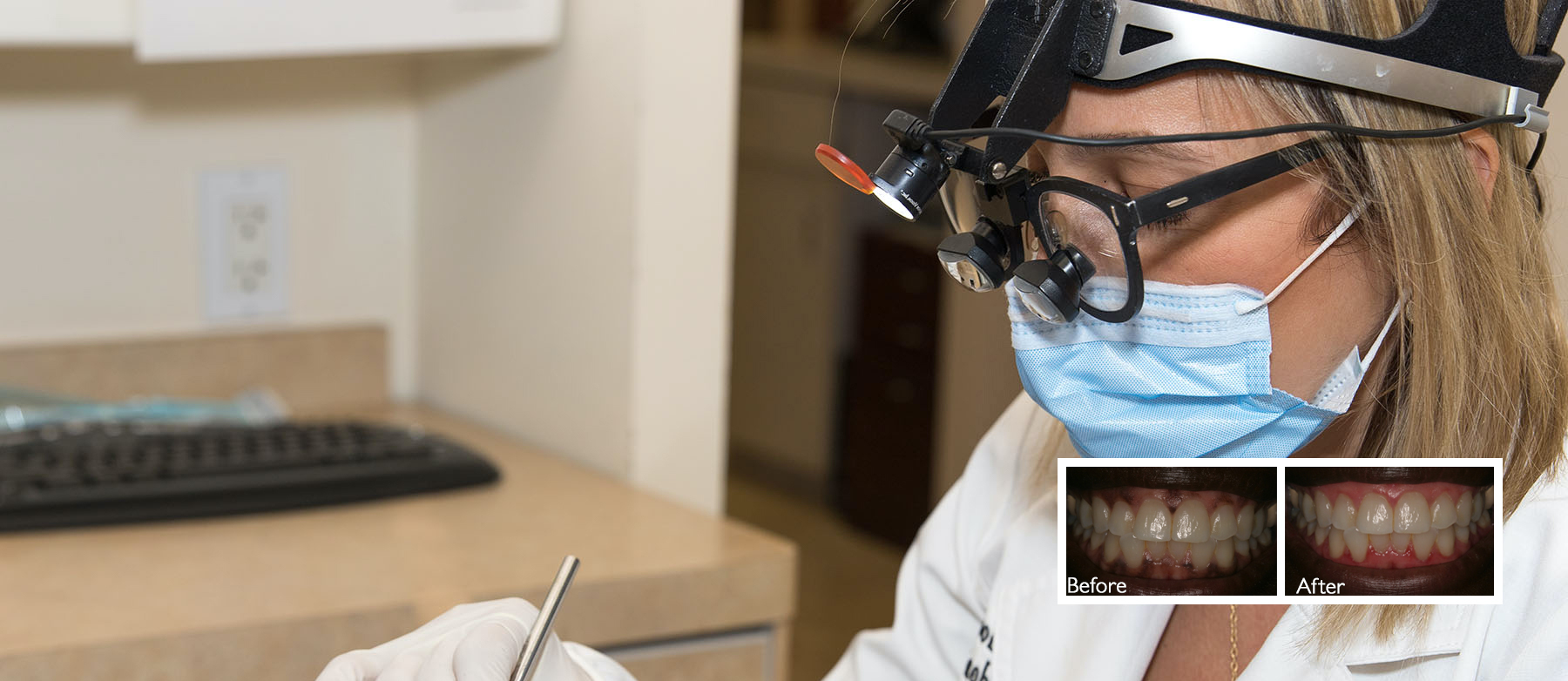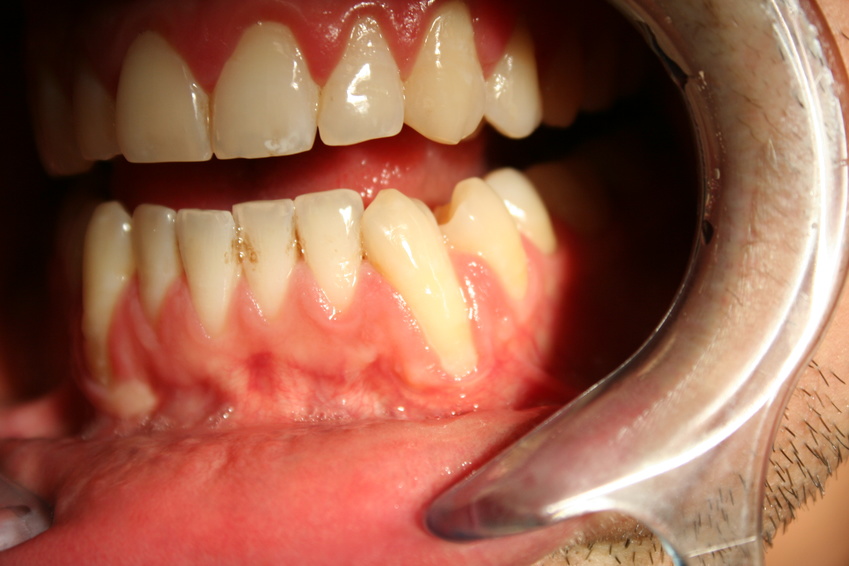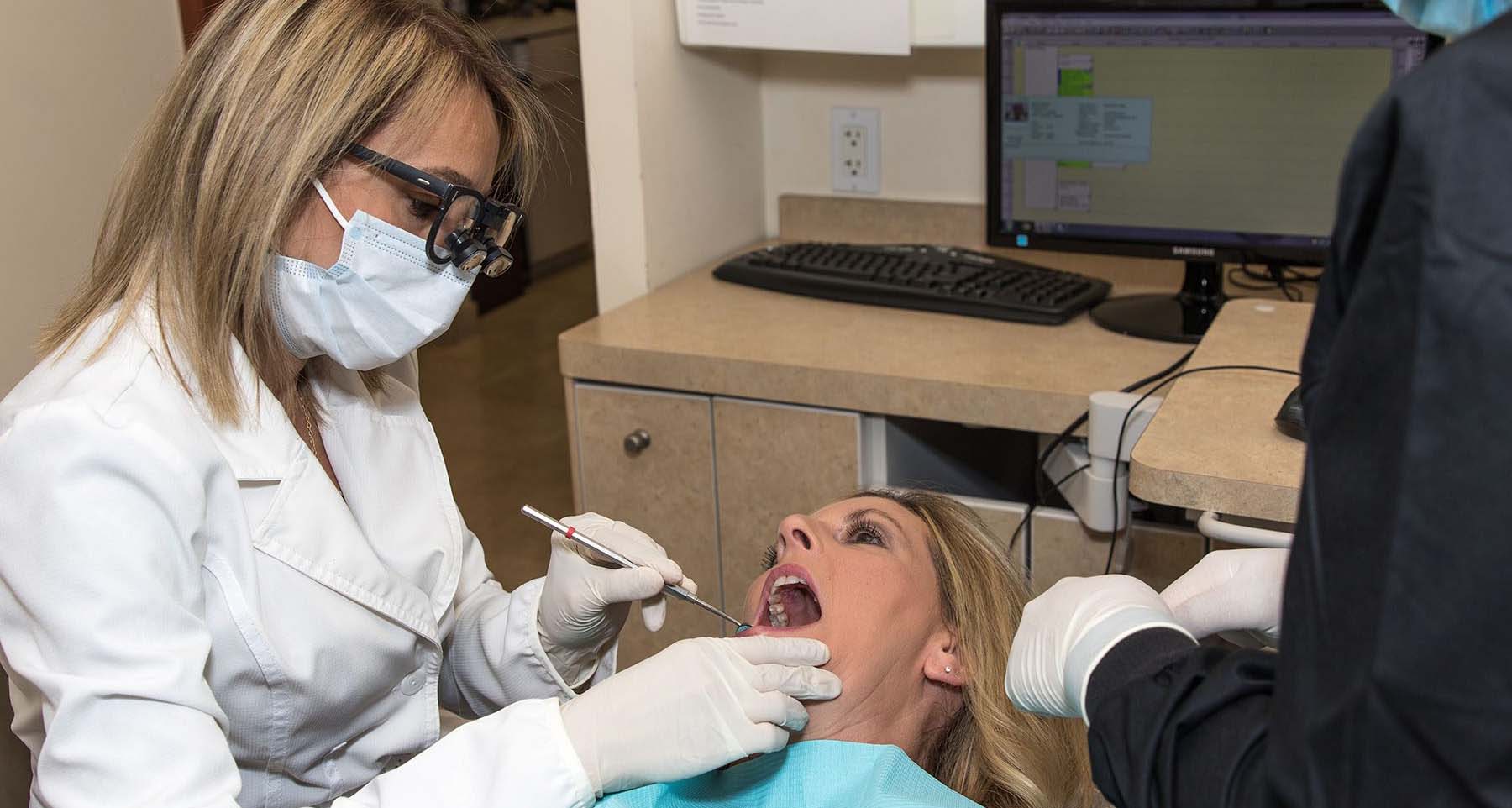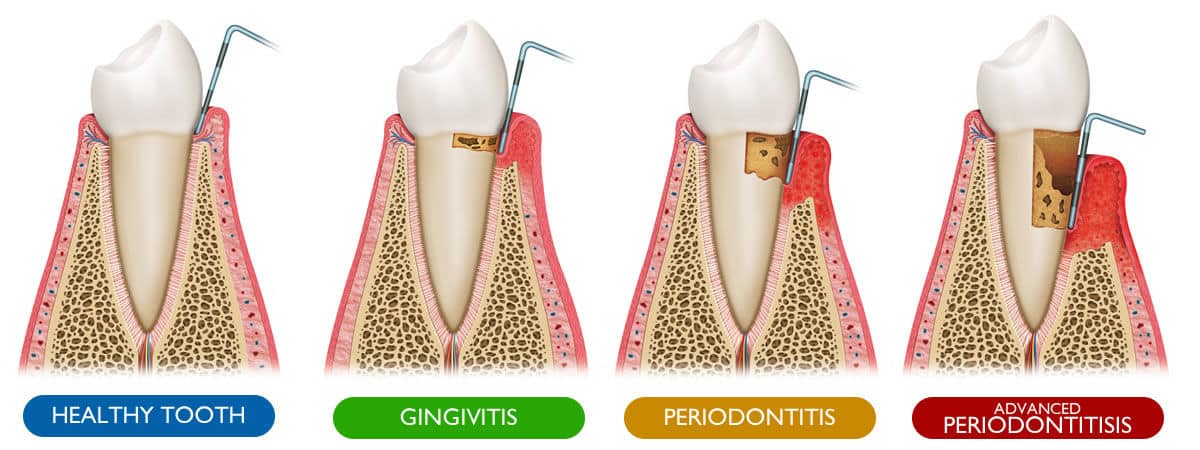For those not already in the know, periodontal disease refers to a state of severe oral infection that can lead to tooth loss the longer it goes untreated. And it is unfortunately quite common in the U.S., especially among the 30-and 40-Something Crowd. But to fully understand just how prevalent periodontal disease is in America, we should probably take a look at a study published by the Centers for Disease Control and Prevention (CDC). According to the study data, an estimated 47 percent or roughly 65 million people in America age 30 and over have some form of the disease. While we are on the topic, it is worth noting that men are more likely to develop this particular oral health problem than women. For reference, the same CDC study shows that 56.4 percent of men will encounter some form of periodontal disease in their lifetime. In contrast, only 38.4 percent of women will suffer the same fate. The one thing that both genders have in common, however, when it comes to periodontal disease, also known as periodontitis, is the toll that it takes on their oral health.
What Is a Periodontal Pocket?
Something to note when it comes to periodontitis, otherwise known as periodontal disease, is that it is not sudden. And in its early stages, it is essentially painless. Of course, this does change as the disease progresses and periodontal pockets begin to happen. Before delving too much further into periodontal pockets, we should probably spend some time familiarizing ourselves with how problems in the oral cavity eventually contribute to the disease in the first place. For those not aware, early-stage gum disease is known as gingivitis. And unlike periodontitis, it is reversible and, according to many dentists, even preventable. When gingivitis goes untreated, it often gives way to an even more severe form of gum disease known as periodontitis. While gum pockets are not consistent with gingivitis, many individuals with this type of gum disease will experience the following:
- Dark red gums
- Puffy or swollen gums
- Bleeding gums
- Severe halitosis
- Receding gums
- Tender gums
Although these symptoms are usually painless, they are enough to prompt most people to schedule an appointment with their dentist as soon as possible. And doing so goes a long way toward reducing the risk of developing periodontitis, not to mention exceedingly deep gum pockets that can result in tooth loss. For reference, gum pockets refer to the amount of space between one’s teeth and their gums. For context, gum pockets measuring between 1 and 3 millimeters (mm) are considered normal and healthy. When gingivitis gives way to periodontal disease, deeper gum pockets are part of that equation. In extreme cases, people with this advanced form of gum disease will have gum pockets in the realm of 7 to 12 mm deep, say many periodontists. Of course, as observed in periodontal disease pictures, things don’t exactly go from bad to worse overnight. After all, periodontitis is a progressive disease. When it comes to the size and severity of gum pockets, individuals with periodontitis will notice the following as the disease progresses:
- Gum pockets measuring 4 to 5 mm correlates with early periodontal disease
- Gum pockets measuring 5 to 7 mm correlates with moderate periodontal disease
Dentists Well-Versed in Gum Disease Treatment in Los Angeles Explain What Periodontitis Does to the Oral Cavity
Although periodontal disease pictures can convey a fair amount of what is happening to vital structures in the mouth, they don’t tell the entire story. According to more than a few esteemed dentists well-versed in gum disease treatment in Los Angeles, several things happen when someone develops a periodontal pocket or pockets. By the way, this means that they have the misfortune of having gum pockets measuring anywhere from 4 to 12 mm deep. When a periodontal pocket forms, it becomes a breeding ground for tartar, plaque, and bacteria. Once these contaminants are 4mm or deeper beneath the gum line, they can’t be brushed away with a traditional toothbrush. These contaminants, over time, trigger erosion of the gum tissue that surrounds and support the teeth. But it does not end there. The same tartar, plaque, and bacteria can also damage the small bones in the jaw that keep the teeth in their sockets. Although the process might take years, the longer these two things go unabated, the more likely an individual is to lose their teeth.
The Truth About Periodontal Disease Treatments: Can Deep Gum Pockets Reversed?
Before discussing what fixing periodontal pockets entail, we should probably speak briefly about preventing it from happening in the first place. Many studies show a strong correlation between poor oral hygiene and periodontitis. The same applies to smoking and consuming a diet high in sugar, notes several of the same studies. With that in mind, it stands to reason that brushing twice per day, flossing regularly, consuming less in the way of sugary foods, and not smoking can all help fend off periodontitis. Also, if you have been diagnosed with certain diseases, it is a good idea to schedule regular exams with a dentist:
- Diabetes
- Cardiovascular disease
- Certain cancers
- HIV and AIDS
- Crohn’s disease
- Rheumatoid arthritis
- Hormonal imbalances
All of these health problems are risk factors for periodontitis. However, regular check-ups with a dentist can help detect the disease early and prevent gum pockets from becoming unnecessarily deep. Whether it stems from an underlying health problem or another contributing factor, there is hope for those diagnosed with periodontal disease. And there are multiple dental procedures that many periodontists will employ when it comes down to fixing periodontal pockets.
Periodontal Disease Treatment: Los Angeles Periodontists Discuss How to Shrink Gum Pockets
Having answered questions relative to what are deep pockets in gums, can periodontal pockets be reduced, and why gum pockets form in the first place, let’s turn our attention now to how Los Angeles periodontists and other practitioners across the U.S. go about treating the condition. First and foremost, the severity of one’s periodontal disease will ultimately inform how a periodontist goes about fixing periodontal pockets. For instance, most periodontists will recommend a traditional dental cleaning to those with only mild periodontal disease, meaning they have a shallow pocket depth of 4 to 5 millimeters (mm). The treatments necessary to resolve an exceedingly deep periodontal pocket or pockets are considerably more involved, some of which include the following:
Scaling – This particular periodontal disease treatment involves a periodontist scraping away tartar and bacteria on the surface and below the gum line of a patient’s teeth. To accomplish this, the practitioner will use an ultrasonic device of some kind. In some cases, they might use laser light to facilitate the task before moving on to root planing.
Root planing – This dental procedure typically follows scaling and is carried to prevent new tartar and bacteria from re-attaching to an individual’s teeth. Similar to scaling, a periodontist uses a specialized dental instrument for this part of the procedure. And this would be either a hand-held scraper or an ultrasonic device of some sort. On a side note, scaling and root planning is not only for shrinking a periodontal pocket or pockets. The combination of scaling and root planing is also an effective bleeding gum treatment for combating gingivitis.
Antibiotics – After undergoing scaling and root planing, it is not uncommon for many practitioners to prescribe either an oral or topical antibiotic to their patients. On a side note, antibiotics are also commonly prescribed if a patient undergoes scaling and root planning as a bleeding gum treatment for gingivitis.
When Surgery Is the Only Viable Option for Combating Severe Periodontal Disease
While less invasive periodontal treatments, namely scaling and root planing, and a course of antibiotics, can benefit individuals with shallow periodontal pockets, they might not be enough for those with pocket depths greater than 5 mm, for example. In these cases, surgical remediation might be the only option a patient has left. That said, some of the surgical procedures that many periodontists recommend to shrink a periodontal pocket or pockets include the following:
Flap surgery If an individual has periodontal pockets that are especially deep, many periodontists will recommend flap surgery. Also known as pocket reduction surgery, this surgical procedure entails making a tiny incision into a patient’s gums. From there, the periodontist will pull back a large portion of gum tissue to expose the roots of the patient’s teeth. The surgical procedure allows them to carry out an even more robust scaling and root planing procedure, which shrinks gum pockets and considerably lowers the chances of tooth loss.
Soft tissue grafts – This dental procedure can improve the appearance of gum tissue that becomes unsightly due to gum recession caused by periodontitis. For those not aware, soft tissue grafting entails a periodontist removing a tiny amount of tissue from the roof of an individual’s palate and using it to conceal exposed roots. The procedure can also shrink the periodontal pocket or pockets that the patient has developed.
Bone grafts – For patients with advanced periodontitis, some periodontists will recommend bone grafting. And this is, of course, in addition to soft tissue grafting. Of course, this recommendation is not too surprising when you consider that periodontal disease is known to weaken and destroy the tiny bones that help support teeth.
Guided tissue regeneration – This dental procedure stimulates the regrowth of bone destroyed by periodontitis. Some periodontists will recommend guided tissue regeneration in addition to bone grafting or as a stand-alone periodontal treatment. The benefits of undergoing this particular procedure are three-fold; it shrinks the pocket or pockets that the patient has developed. Further, it improves the overall appearance of the oral cavity. Lastly, guided tissue regeneration can even help regrow healthy bone tissue.
The Cost of Gum Disease Treatment in Los Angeles
Along with the ones mentioned in this article, there are other treatments available to individuals with periodontitis. But aside from a run-of-the-mill dental cleaning, they are all a bit expensive. And this is especially true for those who do not have dental insurance. That said, the cost of treating gum disease in Los Angeles is similar to that of other major cities in America. It is also worth noting that treatment costs can vary depending on the state of a patient’s overall oral health due to periodontitis. With all of that aside, the average cost of treating gum disease in Los Angeles is as follows:
- Dental prophylaxis – $30 to $75
- Scaling and root planing – $140 and $210
- Active periodontal therapy – $75 per tooth
In addition to these procedures, patients will also have to pay for periodontal pocket maintenance to keep their teeth, roots, and gum pockets healthy, which is typically done four times per year and costs around $115 per office visit.
Final Thoughts on Periodontal Pocket Treatment and Maintenance
In summary, periodontal pocket treatment cost, not to mention the maintenance cost that follows, can be a costly proposition. However, one could argue that the cost of forgoing treatment can be much higher in terms of speech problems and the inability to enjoy certain meals due to tooth loss is considerably higher. That said, if you’re struggling with periodontitis, it is still a good idea to schedule an appointment with a periodontist. In doing so, your practitioner can recommend a periodontal pocket treatment that aligns with your oral health needs and also fits your budget.









